It would be a massive understatement to say Cam Talbot worked out as the Calgary Flames’ backup this past season. After all, his numbers were relatively spectacular in relief of David Rittich. In relief is where he should stay, though.
Talbot vs. Rittich
Admittedly, Talbot’s stats weren’t just relatively spectacular as a backup. They were significantly better than Rittich’s. A pending unrestricted free agent, Talbot went 12-10-1 with a 2.63 goals-against average and .919 save percentage. Rittich was 24-17-6 with a 2.97 GAA and .907 save percentage, which is far from impressive but still respectable.
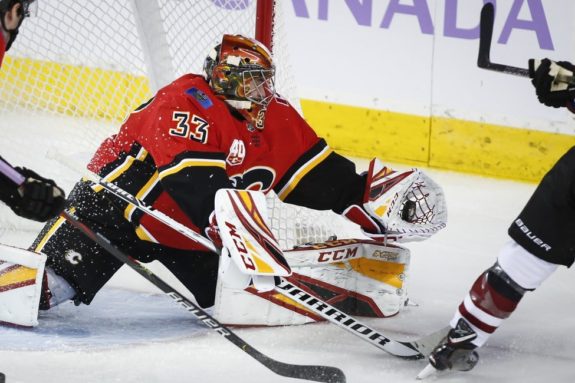
Nevertheless, the disparity can best be explained away by burnout considering the fact Rittich played twice as many games as Talbot. Up until mid-January, Rittich was still performing well, with a .916 save percentage. For the second straight season, he faded down the stretch. In contrast, Rittich had an .883 save percentage over his final 13 games of the season, even allowing four goals in each of his last three games.
There’s every reason to believe the same fate can befall Talbot, though. Talbot’s numbers weren’t just significantly better than Rittich’s. They were also significantly better than his own over the last few seasons, as the Edmonton Oilers’ No. 1 (before he effectively lost the job to Mikko Koskinen, who has been far from elite himself).
Talbot Struggles with Oilers
Talbot went 42-48-6 with a .902 save percentage over the previous two seasons with the Oilers and Philadelphia Flyers. Talbot did have a decent .917 save percentage in 2015-16, but he also had a record of 21-27-5.
In effect, he was only able to get the job done with the Oilers as a starter in 2016-17, when he posted an admittedly exceptional 42-22-8 record, 2.39 GAA and .919 save percentage. While Talbot enjoyed greater statistical success as Henrik Lundqvist’s backup with the New York Rangers, this as good as it got for him as a starter for all intents and purposes.
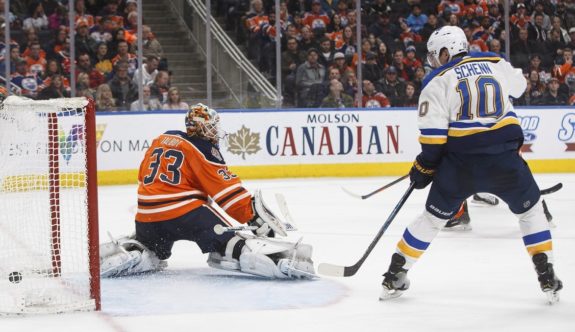
Now, to be clear, “as good as it got” for Talbot is far from bad. After all, as a starter, Talbot did nearly lead the Oilers to the third round that one exceptional season. That’s all you can really ask from a reliable starter. The point is, overall, he hasn’t been, as that one season is the outlier. Furthermore, it’s telling that .919 save percentage is the same one he posted this past season, which is being hailed as a great comeback story.
Sure, the exact number is a coincidence, but it gives an indication of Talbot’s ceiling at this point of his career. When Talbot says, “I think my record shows that when I’m healthy and on top of my game, I can be one of the best in the league,” it’s hard to take him seriously.
Talbot a Good, Not Great Goalie
It’s great Talbot has the confidence to make the argument, because goalies do need confidence. However, even if injuries were the primary reason for his struggles in the past, all he can realistically lay claim to being is a good goalie when healthy. Certainly not one of the best. Among goalies with 23 or more games played, he doesn’t even rank in the top 10 in either save percentage (No. 13) or GAA (No. 19).
Granted, they’re good numbers. However, you’d be hard-pressed to argue they’re among the best, especially when Talbot’s workload was heavily reduced and a guy like Boston Bruins goalie Tuukka Rask is effectively leading the charge among Vezina Trophy candidates with a 26-8-6 record, 2.12 GAA and .929 save percentage. Now, he’s one of the best.
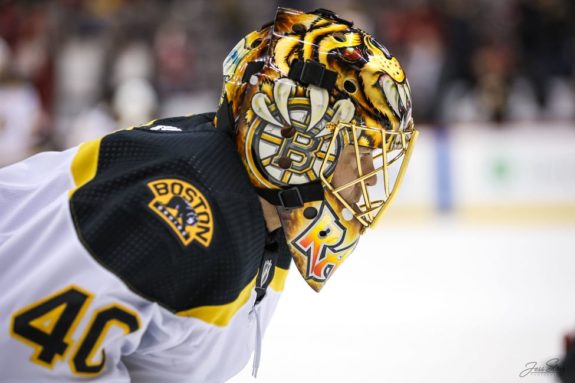
Fair is fair. Credit to Talbot. He pretty much accomplished what he set out to do this season by bouncing back in a big way, putting himself in a position to negotiate a better contract this summer. He’s proven that he’s far from done and can still offer an NHL general manager something even as he approaches 33 years of age. What that something is, is open to debate though, especially if the GM is question is Brad Treliving.
A Big but Easy Decision for Flames
Treliving and the Flames have a busy offseason ahead of them. They need to make several key free-agent decisions, especially in net and with regard to their defense corps, which allowed a 24th-ranked 32.4 shots per game and can in part explain Rittich’s inability to cope with his workload. The fact remains, whereas Talbot is turning 33, Rittich will be 28. There are no guarantees Talbot can keep up his stellar play from here on out, especially in the role of a No. 1.
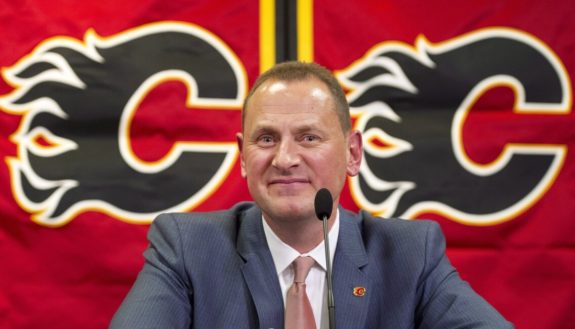
Maybe there aren’t guarantees with Rittich either, but remember: This was officially his first season as a No. 1. It’s not a problem with his ability, but rather his endurance. Those things can be tweaked and it’s a role he can still grow into as opposed to Talbot, who’s undeniably on the verge of growing out of it as a goalie in his mid thirties.
While certain goalies can still maintain a high level of play as they enter the twilight of their career, nothing about Talbot up to this point has given any indication that he is one of them. If injuries are behind his struggles the last few seasons, Treliving has to be just as cautious re-signing him, because his endurance is also likely to be an issue.
Rittich Over Talbot
In other words, the Flames don’t need Talbot to take over for Rittich. They need Rittich to be more consistent. Those are two different things. As a result, Treliving can really only afford to keep Talbot on as Rittich’s insurance policy, like before, at no more than the same $2.75 million price tag, relative to what Talbot had been making. More importantly, it’s what Rittich is making.
Anything more and it throws everything out of whack, as Rittich simply has more to offer the Flames. Furthermore, investing in Talbot long-term makes no sense when better options, i.e., proven starters in the league, will also be available via free agency.
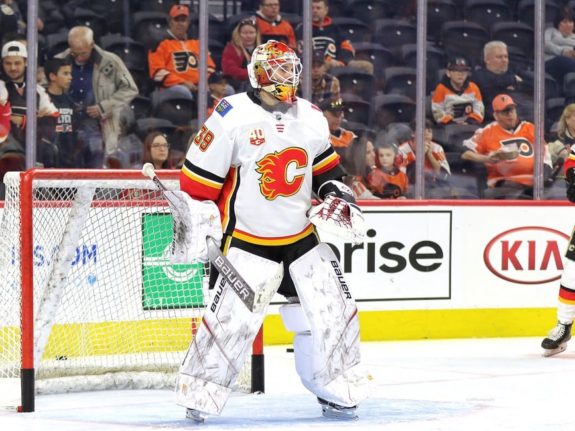
Talbot may have proven to be a good fit with the Flames, but only in the role he played this past season. The Flames would be smart to instead shop for a proven backup to support Rittich… whether that’s Talbot or someone else. Because if it comes down to a choice between Rittich and Talbot, the choice should be an easy one.
Talbot may justifiably be looking for a raise. That’s his right, as this is possibly his last shot to cash in with a decent contract. That may be what ultimately prevents the Flames from re-signing him. Still, Talbot should consider the possibility that he successfully re-discovered his niche and that this is indeed as good as it gets for him.
Again, “as good as it gets” doesn’t necessarily have to be bad. In fact, Talbot proved it can be a very good thing. So, why mess with it? Ultimately, it should be an easy decision not to… for both the Flames and Talbot.